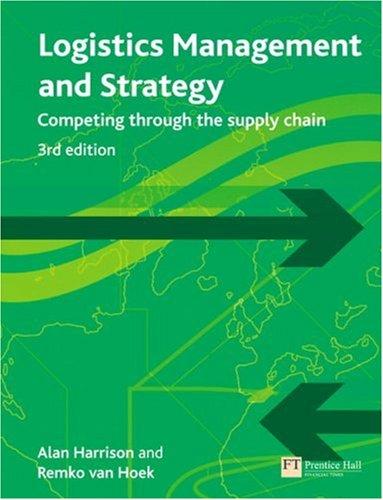2 Identify potential barriers to executing the proposed apparel supply chain of the future. Case study 4.4
Question:
2 Identify potential barriers to executing the proposed apparel ‘supply chain of the future’. Case study 4.4 describes some of the competitive pressures in the apparel industry and trade-offs in developing global ‘vertical’ supply strategies. (Vertical strategies aim to emulate retailers like Zara, which source everything from set manufacturing plants that are situated close to their retail outlets in Europe). Setting up a similar operation in the US would be problematic – for a start, there is not much left of the apparel manufacturing base because it went overseas long ago for cost reasons. Competitive pressures are constantly increasing: 80 per cent of the industry is fashion-driven – and fashion changes every 6–8 weeks. Thus, time-to-market is increasingly important. But lead times from catwalk to customer for such a fast-moving industry are often a leisurely six months or more. Average markdowns increased to 30 per cent, and missed sales opportunities go unrecorded. Chappel (in Lewis, 2001) states professional buyers are often measured on the difference between buying and selling prices; merchandisers on maximising sales of a fixed amount of stock, and distribution professionals on achieving the lowest unit cost. No one takes the overall supply chain into account and creates a balanced view of the trade-offs between bought-in product cost, achievable sales, the cost of mark-down and the cost of operating the supply chain from end to end.
Step by Step Answer:

Logistics Management And Strategy Competing Through The Supply Chain
ISBN: 9780273712763
3rd Edition
Authors: Alan Harrison, Remko Van Hoek






